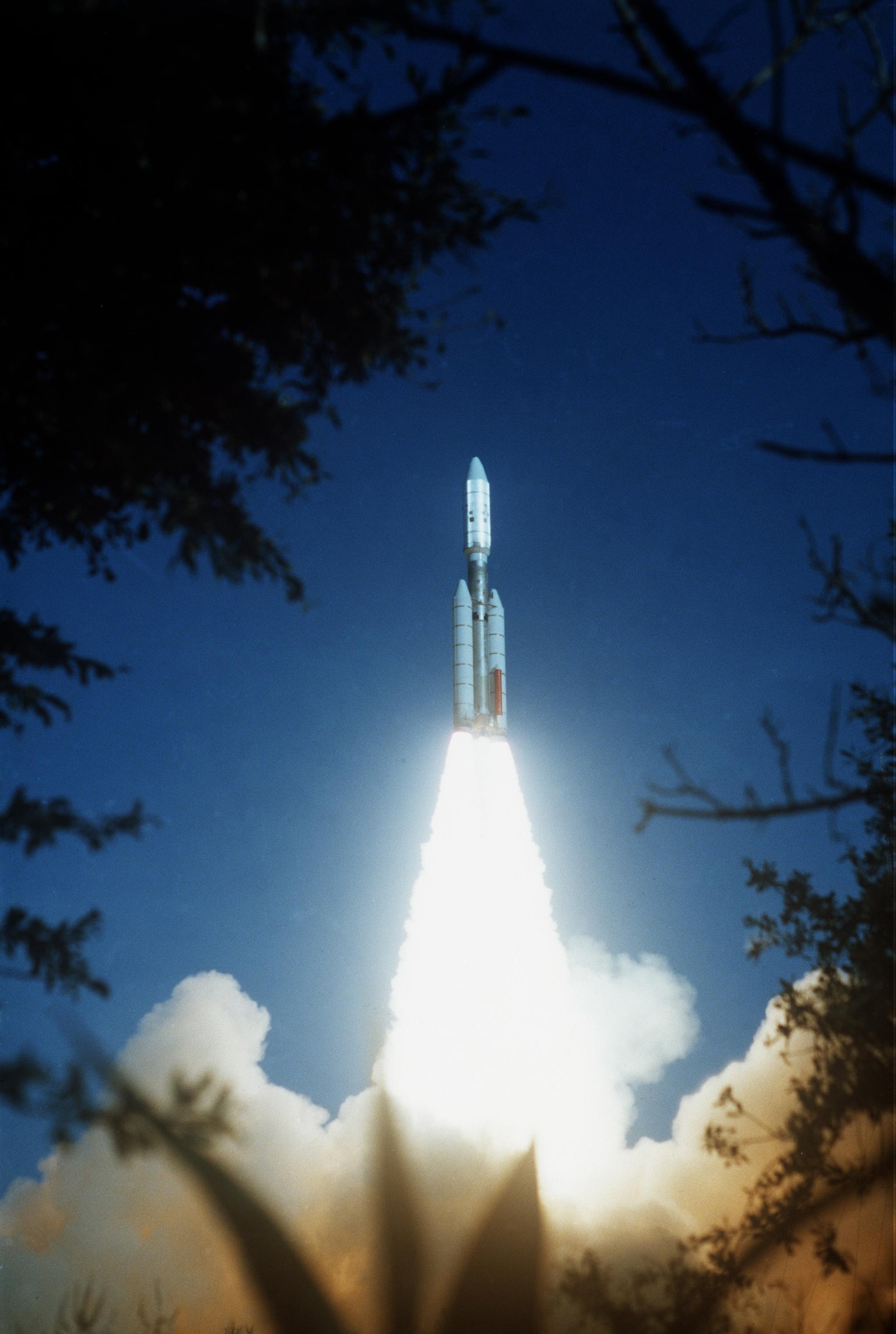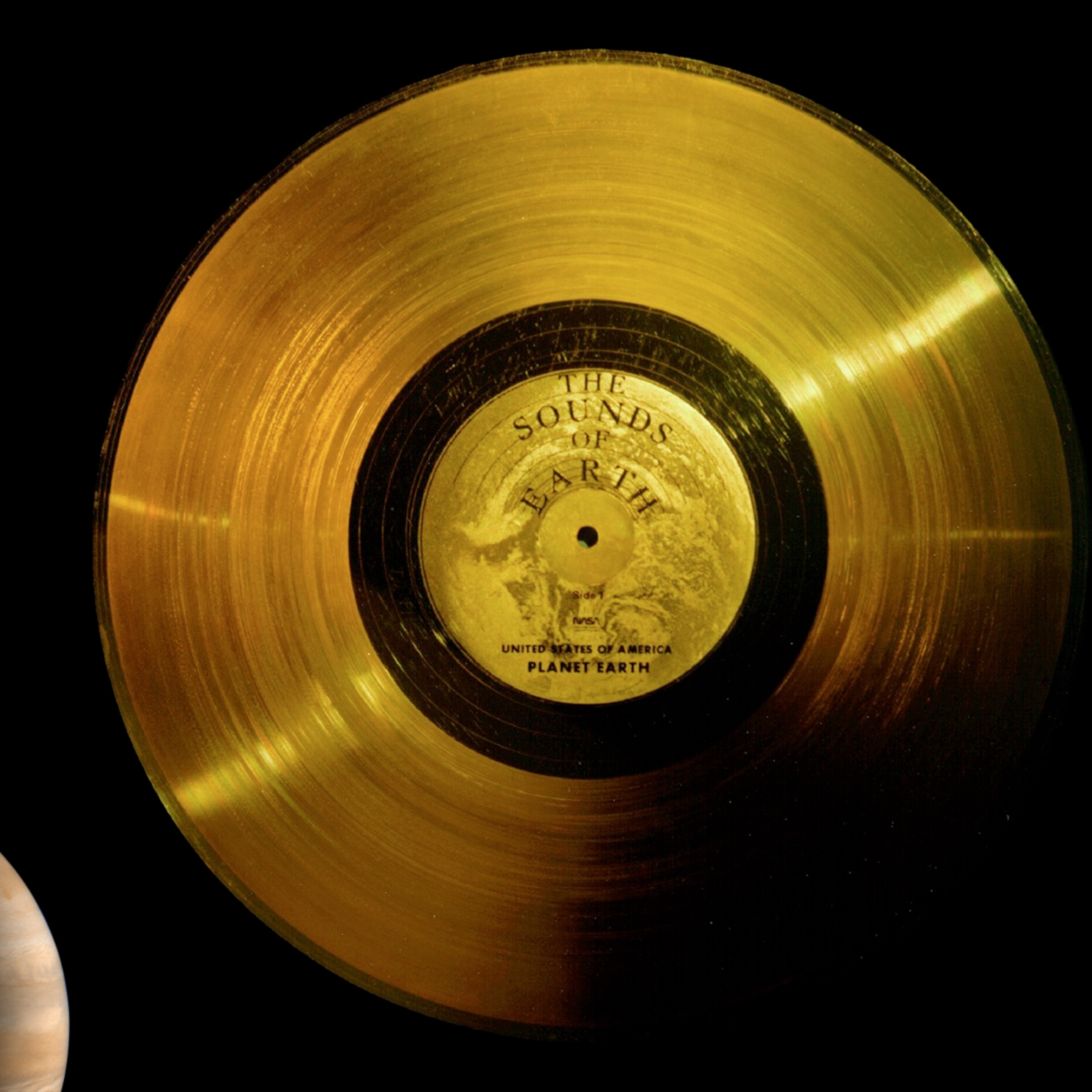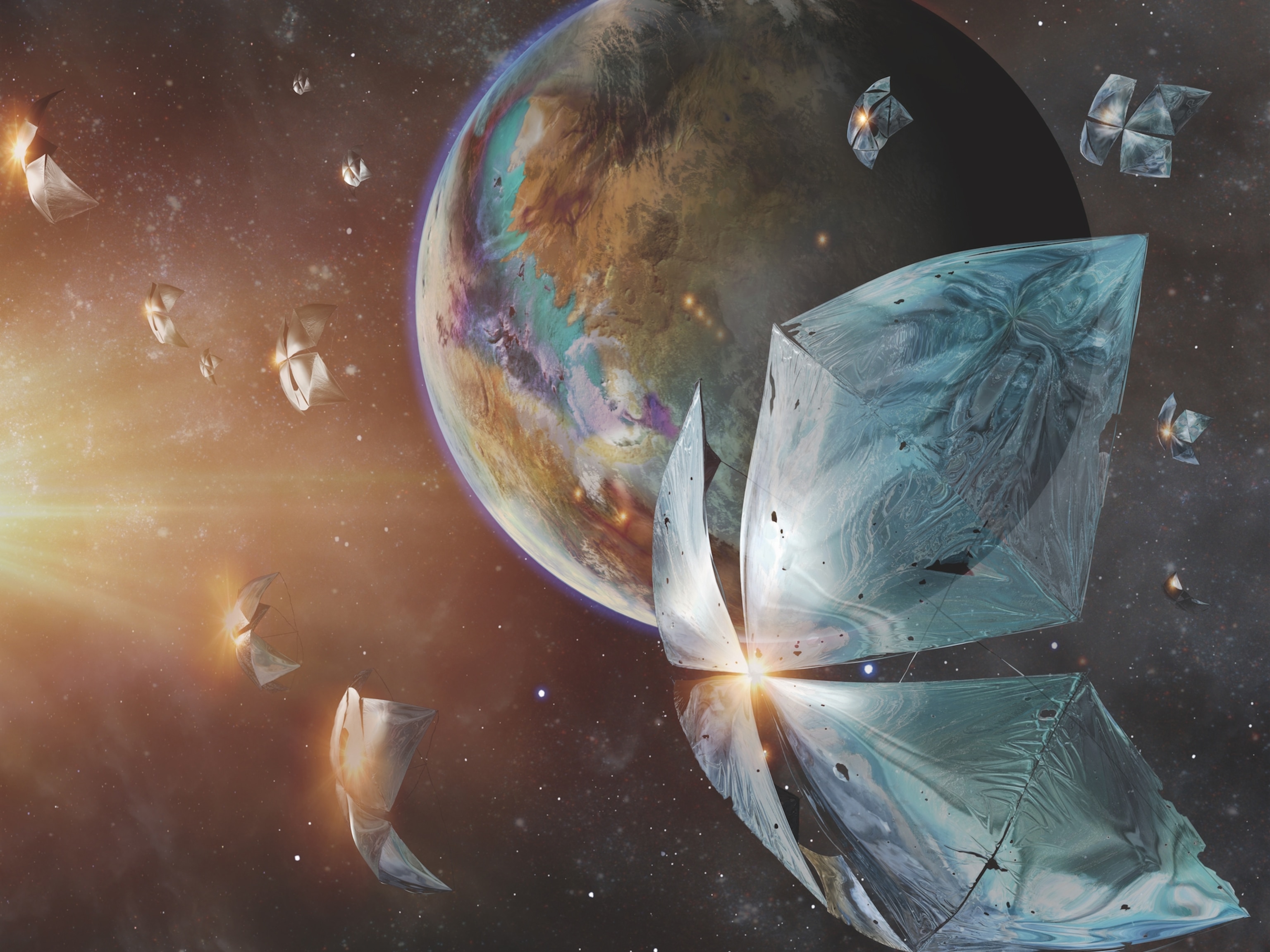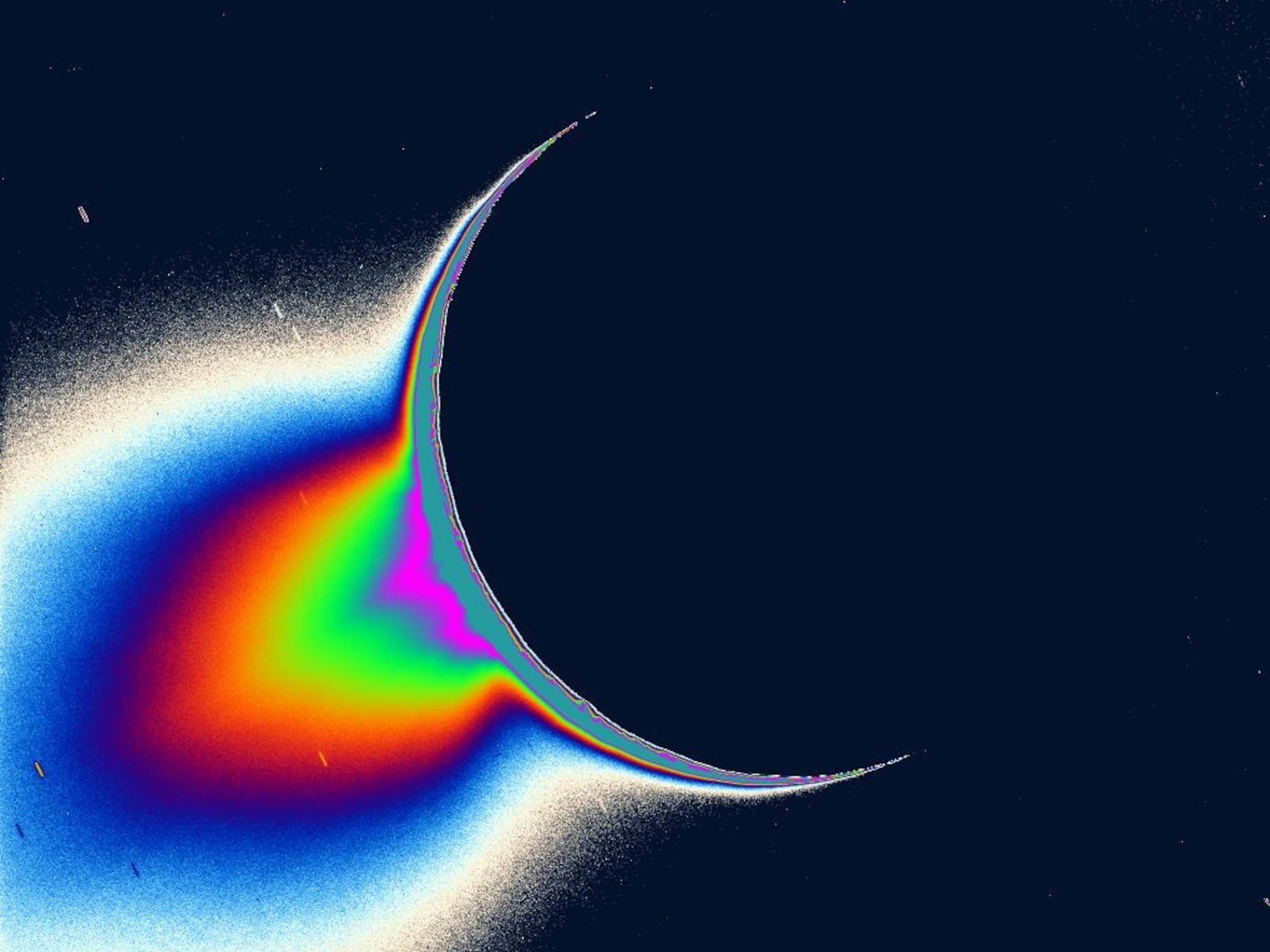
How a NASA Spacecraft May Help Aliens Find Earth
The pulsar maps on the Voyager probes pinpoint our location in the galaxy—even as some experts debate the pros and cons of signaling ET.
Forty years ago, we sent a map to Earth sailing deep into the cosmos.
Copies of this map are etched into each of the twin Voyager spacecraft, which launched in the late 1970s and are now the farthest spacecraft from home. One of the probes has already slipped into interstellar space, and the other is skirting the fringes of our sun’s immediate neighborhood.
If it’s ever intercepted and decoded by extraterrestrials, the map will not only reveal where to find our watery little world, but also when the space probe that delivered it to alien hands left home.
“We needed to put something on the Voyager that said where it came from, and how long it was traveling,” says my dad, Frank Drake, who designed the map.
The Voyager version of route-finding pins the sun onto our galaxy using 14 pulsars, which are the rapidly spinning corpses of exploded stars. It’s a cipher unlike anything made before, the kind of object that drives entire fictional quests—and that is currently spurring arguments over the intelligence of broadcasting our existence to civilizations with possibly nefarious proclivities.
“Back when Drake did the pulsar map, and Carl Sagan and the whole team did the Voyager record, there hadn't been very much debate over the pros and cons of contact with extraterrestrial intelligence,” says York University’s Kathryn Denning, an anthropologist who studies the ethics of sending messages to extraterrestrials.
“Now, however, as you know, there is a major debate among scientists and a variety of stakeholders about the wisdom of doing anything other than listening.”
Stellar Map Making
Drake’s cosmic directions to Earth are stamped onto the cover of the Voyager Golden Record, two of which have been ferrying the sights and sounds of planet Earth across the interstellar sea since 1977. (Find out why the Voyager mission beyond Neptune almost didn’t happen.)
But unlike the record, which grew into its final form during one short summer, the map took shape years earlier, in 1971.
Back then, my dad and Carl Sagan were designing a message to put on the Pioneer 10 and 11 spacecraft, which would be flung from the solar system after an encounter with Jupiter. One of the components he and Sagan wanted to include was a map that pointed to Earth in both space and time.
The question was, how do you create such a map in units that an extraterrestrial might understand?
Earth-years would be perfectly meaningless, because they are derived from our planet’s particular path around the sun. And there’s also the question of coordinates--in space, no one can find you using up, down, east, or west.
Even the stars themselves are constantly shifting on astronomical time scales. “Second star to the right and straight on ‘til morning” doesn’t quite work if the map is found a billion years from now and the star in question—say, Betelgeuse—has long since exploded and died.
The Magic About Pulsars
To my dad, the answer was obvious: pulsars. Discovered in 1967 by Jocelyn Bell Burnell, these dense husks of expired stars were perfect blazes in both space and time.
For starters, pulsars are incredibly long-lived, staying active for tens of millions to multiple billions of years.
Also, each pulsar is unique. They spin almost unbelievably fast, and they emit pulses of electromagnetic radiation like lighthouses. By timing those pulses, astronomers can determine a pulsar’s spin rate to a ridiculous degree of accuracy, and no two are alike.
But pulsars do slow down, sometimes by a mere but measurable billionths of a second a year. By calculating the difference between a pulsar’s spin rate when the map is found versus the spin period inscribed on the map, an intelligent being could figure out how long it had been since the map was made.
“There was a magic about pulsars … no other things in the sky had such labels on them,” Drake says. “Each one had its own distinct pulsing frequency, so it could be identified by anybody, including other creatures after a long period of time and far, far away.”

He reasoned that if those beings had figured out what pulsars were, they surely knew where the whirling, dead stars resided in the galaxy. Using the map, they could then follow the trail back to the sun.
After a roughly three-minute discussion with Sagan, the decision was made.
Drake drew the map using 14 known pulsars (today, that original pencil-drawn pulsar map is casually tucked into an old produce box at home). The length of the lines connecting each pulsar to a central point—the sun—indicates how far they are from home. Along those distance markers, he inscribed the pulsars’ spin rates out to 12 digits in binary code, so any curious aliens would know which pulsars he’d chosen as anchors.
Successfully decoding the map would unambiguously pinpoint the sun’s position and the timeframe of the spacecraft’s launch.
Today, that makes some scientists and philosophers very nervous.
Dangerous Beacon?
When the Voyager spacecraft launched, astronomers had no evidence that other planets even existed outside our solar system, much less worlds capable of hosting alien life.
Now, thanks to missions like NASA’s planet-hunting Kepler endeavor, we know that planets are common in the galaxy, and that a sizable percentage of those worlds could be like Earth. The revelation has spawned efforts to send directed radio messages toward promising stars sytems.
In the wake of these discoveries, a debate has emerged over the ethics of intentionally announcing our presence to the stars. Some think the endeavour is foolish and dangerous, given how little we know about what might be out there. Others would rather prioritize listening to the stars over talking to them.
For the Voyager spacecraft, the truth is already out there, as the maps they carry hurtle deeper into the void.

“In those days, all the people I dealt with were optimists, and they thought the ETs would be friendly,” Drake says. “Nobody thought, even for a few seconds, about whether this might be a dangerous thing to do.”
So what are the chances of the map actually reaching extraterrestrial shores aboard the Voyagers?
“Very small,” Drake says. “The thing is going something like 10 kilometers per second, at which speed it takes—for the typical separation of stars—about half a million years to go from one star to another. And of course, it’s not aimed at any star, it’s just going where it’s going.”
If an extraterrestrial civilization has sufficiently powerful radars, it might be able to detect the Voyager spacecraft from afar. But that’s still unlikely, Drake says, which means the Voyagers’ sights, sounds, and maps to planet Earth may forever sail silently through the cosmos.
The reality is that humans have been passively announcing our presence to the cosmos for nearly a century via radar, radio, and TV transmissions. And with the rise of private space enterprises, who knows what new message to the stars might end up making its way into space?
Denning urges everyone to act thoughtfully and consider the pros and cons of intentionally hailing aliens.
“We're all on this Earth together,” she says.








